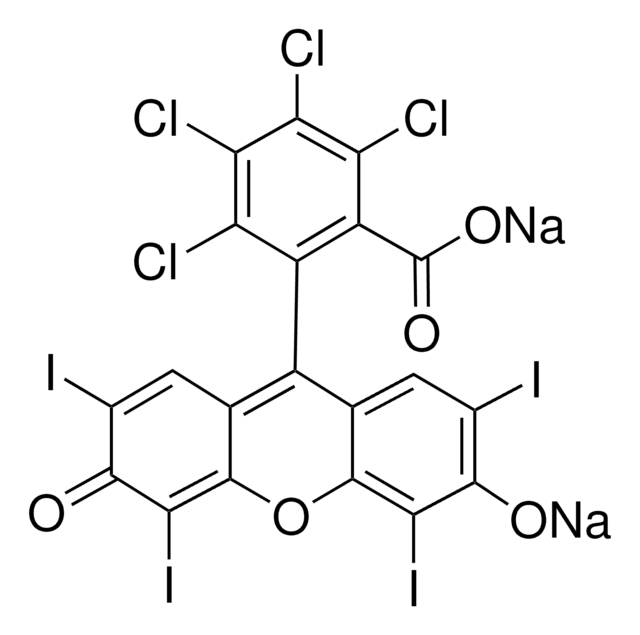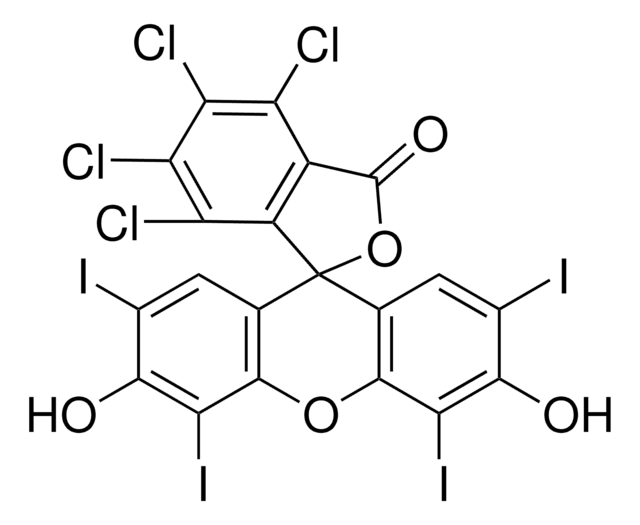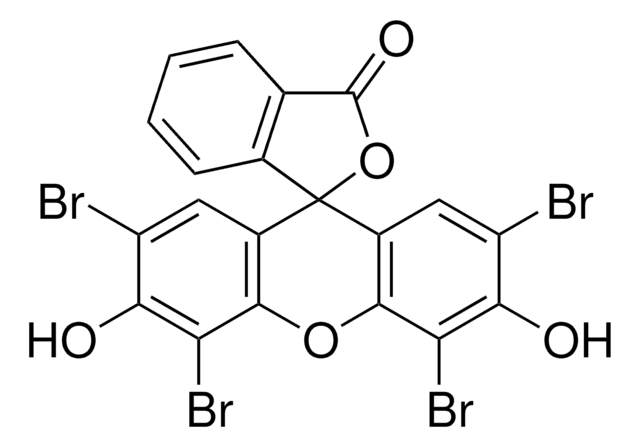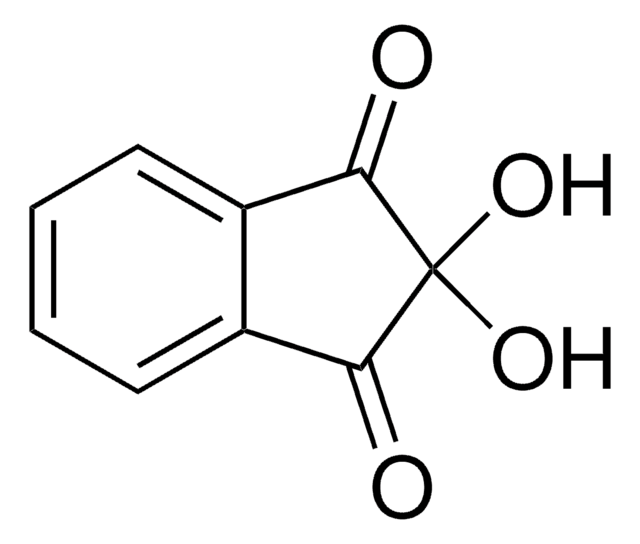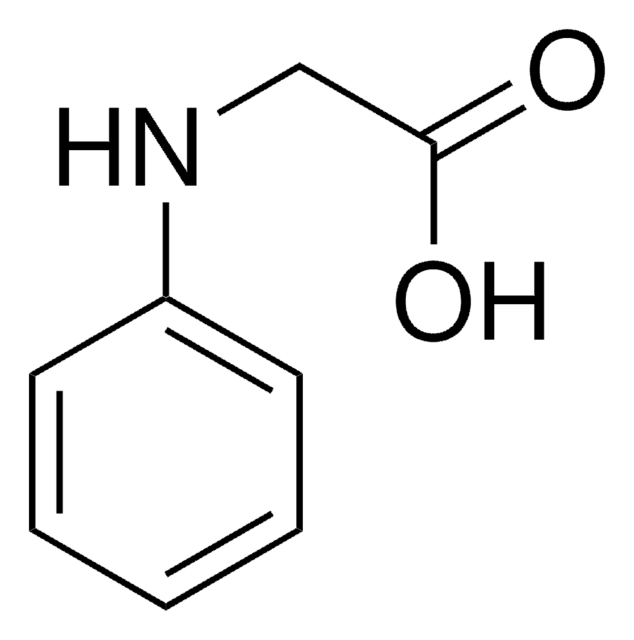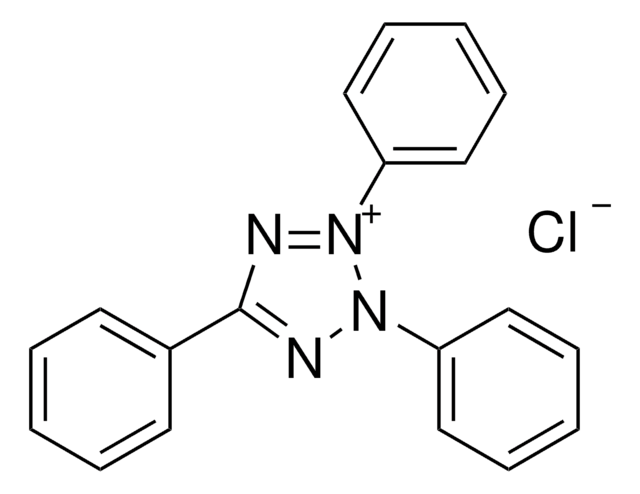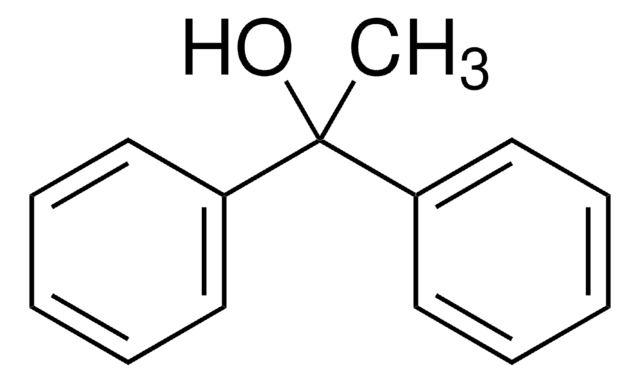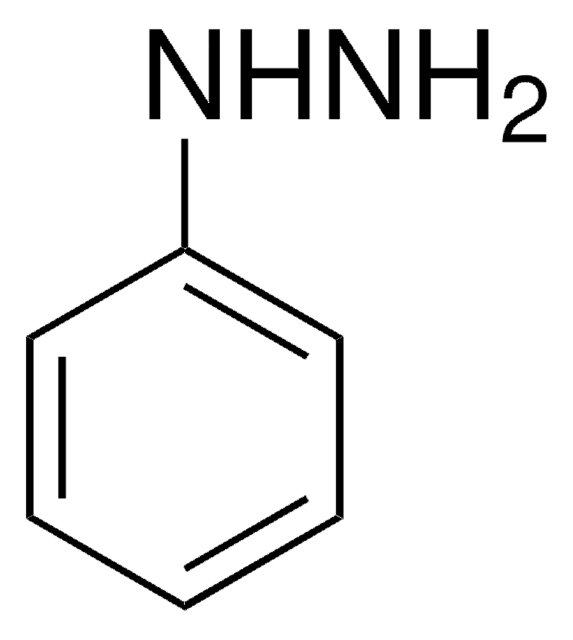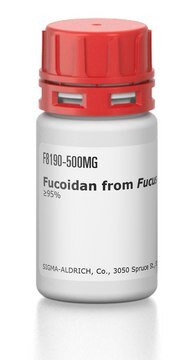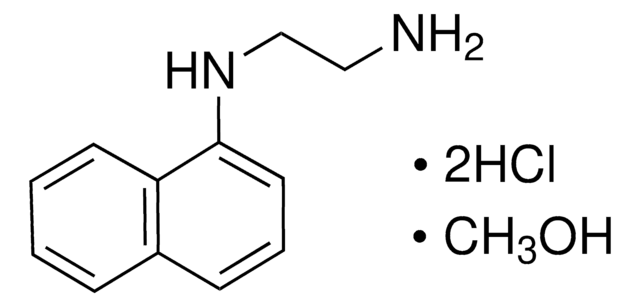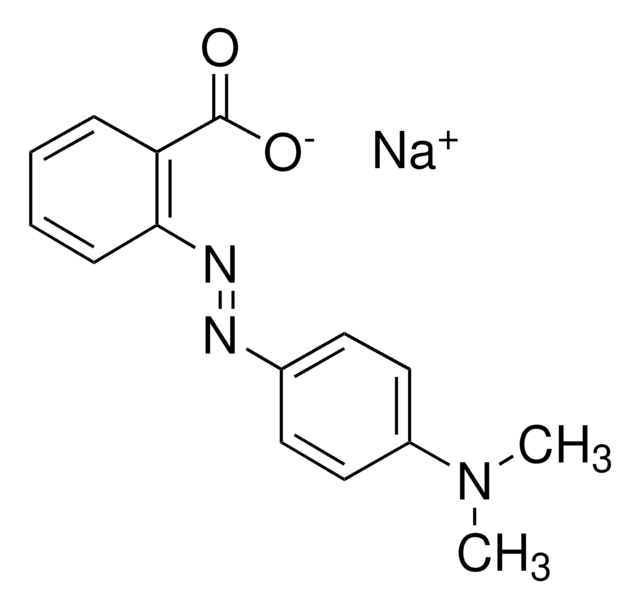198250
Bengalrosa Natriumsalz
certified by the Biological Stain Commission, Dye content ≥80 %
Synonym(e):
4,5,6,7-Tetrachlor-2′,4′,5′,7′-tetraiodfluoreszein Dinatriumsalz, Bengalrosa Natriumsalz, Rose Bengal, Säurerot 94
About This Item
Empfohlene Produkte
Qualität
certified by the Biological Stain Commission
Qualitätsniveau
Form
powder
Zusammensetzung
Dye content, ≥80%
Farbe
dark violet
Löslichkeit
H2O: 1 mg/mL
λmax
548 nm
ε (Extinktionskoeffizient)
≥90000 at 546-550 nm at 0.008 g/L
Anwendung(en)
diagnostic assay manufacturing
hematology
histology
Lagertemp.
room temp
SMILES String
[Na+].[Na+].[O-]C(=O)c1c(Cl)c(Cl)c(Cl)c(Cl)c1C2=C3C=C(I)C(=O)C(I)=C3Oc4c(I)c([O-])c(I)cc24
InChI
1S/C20H4Cl4I4O5.2Na/c21-10-8(9(20(31)32)11(22)13(24)12(10)23)7-3-1-5(25)16(29)14(27)18(3)33-19-4(7)2-6(26)17(30)15(19)28;;/h1-2,29H,(H,31,32);;/q;2*+1/p-2
InChIKey
UWBXIFCTIZXXLS-UHFFFAOYSA-L
Suchen Sie nach ähnlichen Produkten? Aufrufen Leitfaden zum Produktvergleich
Verwandte Kategorien
Allgemeine Beschreibung
Anwendung
- Conn′s technique for bacteria in soil and Kreyberg′s stain for keratin and mucus
- counterstaining hematoxylin
- staining cellular inclusions, together with Bismark brown
Lagerklassenschlüssel
11 - Combustible Solids
WGK
WGK 3
Flammpunkt (°F)
Not applicable
Flammpunkt (°C)
Not applicable
Persönliche Schutzausrüstung
Eyeshields, Gloves, type N95 (US)
Analysenzertifikate (COA)
Suchen Sie nach Analysenzertifikate (COA), indem Sie die Lot-/Chargennummer des Produkts eingeben. Lot- und Chargennummern sind auf dem Produktetikett hinter den Wörtern ‘Lot’ oder ‘Batch’ (Lot oder Charge) zu finden.
Besitzen Sie dieses Produkt bereits?
In der Dokumentenbibliothek finden Sie die Dokumentation zu den Produkten, die Sie kürzlich erworben haben.
Kunden haben sich ebenfalls angesehen
Protokolle
Separation of Tartrazine; Amaranth; Indigo carmine; New Coccine; Sunset Yellow FCF; Allura Red AC; Fast Green FCF; Erioglaucine disodium salt; Erythrosin B sodium salt; Phloxine B; Rose bengal
Unser Team von Wissenschaftlern verfügt über Erfahrung in allen Forschungsbereichen einschließlich Life Science, Materialwissenschaften, chemischer Synthese, Chromatographie, Analytik und vielen mehr..
Setzen Sie sich mit dem technischen Dienst in Verbindung.